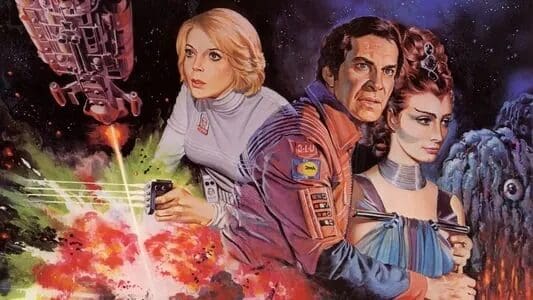
The Dark Herald delves deeply into a sci-fi classic: Space 1999 by Gerry Anderson, in an epic three-part series. Part Two. See Part One.
One of the biggest disappointments of Gerry Anderson’s professional life had to be the poor reception of Journey to the Far Side of the Sun (Doppelganger). It was his only theatrical release, and it was a bomb. Gerry Anderson had put his heart into the project. The script was as good as he could make it. There were plenty of thrills and chills, the effects were Derrick Meddings perfect. And while the basic science of a film that was supposed to be hard science fiction didn’t pass the smell test, the characters were pretty decent. They all had strengths and weaknesses; each had their own distinct voice. While there were plenty of problems behind the scenes, they didn’t show up on the screen. Gerry Anderson gave it his all and it came to nothing.
When you have had a major artistic effort attract no interest from general audiences you go through an artist’s stages of grief.
Depression: You are an untalented hack who failed because you deserved to fail. You aren’t even good enough to write postcards.
Recovery: There are people who tell you the work was great, and it really spoke to them on a deep level. Maybe you didn’t get it all wrong.
Analysis: Okay, what did you do right and what did you do wrong? More importantly is there someone who succeeded where you failed? And if so, why?
Application: You incorporate certain elements of someone else’s success, preferably without compromising your own vision.
Back to Work: You’re an artist because you’re an artist. Even if no one ever likes a damn thing you do, you still have to do it anyway for the same reason a beaver builds a dam.
RELATED: The 21st Century of Gerry Anderson – UFO
Journey to the Far Side of the Sun came out in 1969. While it was in production, 2001 A Space Odyssey became a monster hit. This probably provided hope for Anderson until it didn’t, but regardless, this was the successful film he had to study.
Journey to the Far Side of the Sun was at its core a Twilight Zone big twist kind of story and that was getting a little played out by 1969. What 2001 brought to the party was psychedelic weirdness. There was a combination of both hard science and science leaving the building entirely. The movie offered no explicit explanation of what happened to Bowman. You had to work it all out for yourself. And you never got any explanation of what the monoliths were, who created them, or why. Eternal mystery was at the heart of 2001.
Kubrick’s setting of a turn-of-the-century moon colony was a bit optimistic but on the other hand, the only historical analogy available at the time was the rapid progression of airplane technology. Look what happened to airplanes from 1920 to 1950. So far as the 1968 general public was concerned, having a permanent lunar colony by 2000 was something that could be taken for granted. And there were indeed some thumbnail sketch plans for a lunar base using Apollo technology, it was kind of a plan B if the Russians beat NASA to the Moon.
By 1975, a turn-of-the-century moon city was looking over-optimistic at best, but Anderson stuck with the setting for a big reason. The very name Space 1999 invites direct comparison to 2001: A Space Odyssey. Gerry Anderson was telling you what he was trying to do.
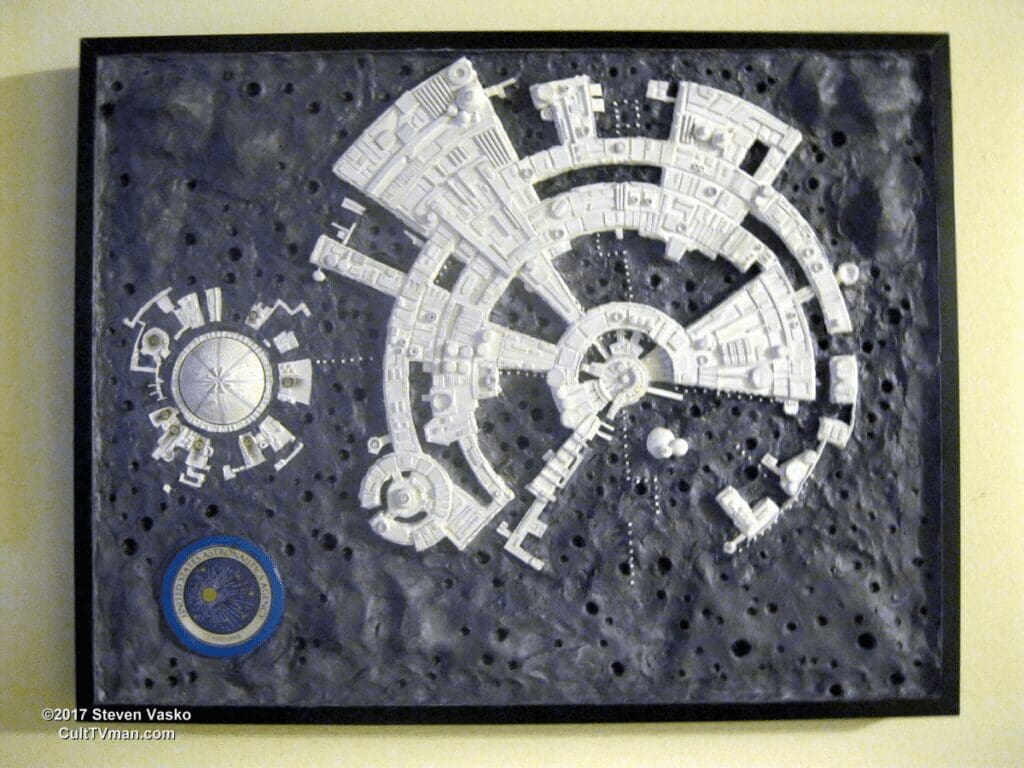

The opening scene of each episode showed Commander Koening against a completely white background off-center to the right and then switched to a mirror shot of Doctor Russel against a totally black background while a slow crescendo of fanfare with kettledrums is played. Barry Gray’s composition clearly shows a strong influence of Strauss’s Also Sprach Zarathustra.
As I have already mentioned. Space 1999 began as a sequel to UFO but having had to discard that narrative framework allowed Gerry Anderson to go ham on some concepts that had been bubbling around in the back of his mind for some time.
Space 1999 already had some pretty big asks for its audience. By the 1970s most people knew enough about how big the universe is that the Earth’s Moon traveling between star systems at sub-light speed was something that they just couldn’t buy on an intellectual level. So, if you are already having to discard that much common sense, what’s ditching a little more going to hurt?
The show was very big on its meta-contextual spaciness. It was trying, and by seventies standards, succeeding in being a thinking man’s show. The characters might at first look like cardboard cutouts but as you got to know them, you would find there was more to them than you first thought. Koenig at first glance is a bad Kirk clone but that isn’t accurate.
It also wrestled with some concepts that Star Trek wouldn’t have touched with a fifty-foot pole. Legacy of the Darians is a rewrite of Heinlein’s Universe, and a story about the ethics of cannibalism for survival, and eugenics in the face of extreme genetic corruption was some pretty heady stuff back then. I suppose it would still be heady stuff today, except it would all revolve around the question, is it racist?
That episode was one of the better ones. Anderson learned something Roddenberry never did, which is to let his actors act. There was a great little scene at the end, one of the security guards had been murdered on the mission and when they were flying back to Alpha the rest of the away team kept silently looking at his empty seat. No redshirt that died on Star Trek ever got a second thought but the Alphans felt really bad for having lost one of their own that night. Since it was 1975, they had to dance around the cannibalism issue by not saying, “cannibalism,” but they made up for that with a strong visual. In one shot there was a row of dead naked bodies, like carcasses in a butcher shop.
RELATED: Disney and Square Enix’s Kingdom Hearts Getting Closer To A Movie or TV Adaptation
I was surprised to see the guest star that week was Joan Collins. Space 1999 couldn’t afford the best of the best talent but they had enough money that they could hire actors you would recognize and had heard of. Christopher Lee, Peter Cushing, Brian Blessed, and a young Ian McShane for example. There were other Brit actors that I recognized but had parts that were almost non-speaking roles. David Prowse of course played the giant space monster.
Space 1999 was arguably more of a horror series than an adventure show, (at least during the first season).
They got away with some pretty grizzly stuff in the 1970s.
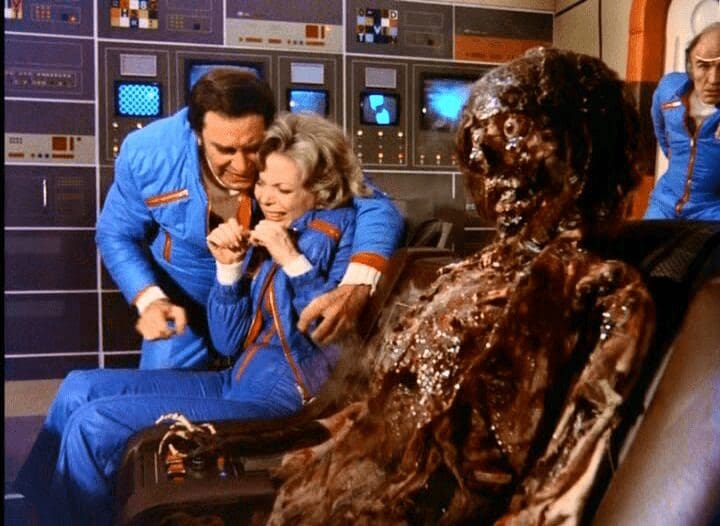
But that said a lot of the horror was atmospheric. In one episode some aliens led by Christopher Lee are heading to Earth and have room for one passenger. The most useless mouth to feed on the Moon was High Commissioner Simmonds. He takes a hostage and forces his way onto the alien ship, he is then put into suspended animation with the rest of the aliens. And then he wakes up years before the ship will reach Earth. Effectively buried alive.
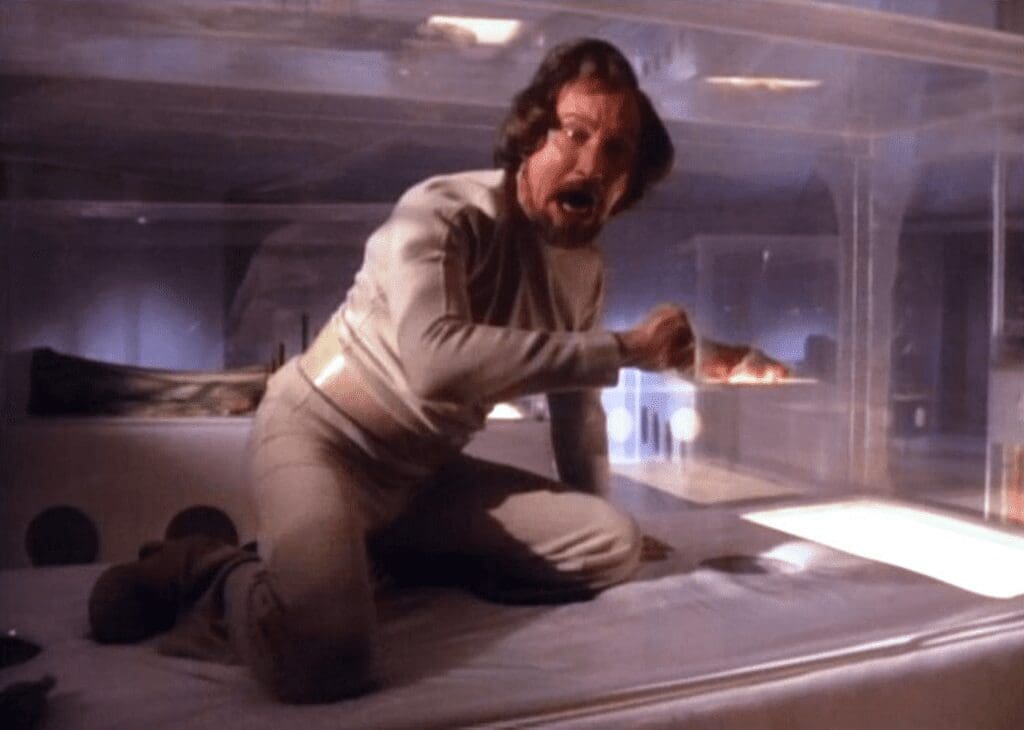
My favorite episode of the whole series was Black Sun. The Moon is going to fall into a black hole. There is nothing they can do to stop it, I mean, it’s a black hole. This was a very character-driven episode dealing as it did head-on with death. Koening puts together a designated survivors mission and the computer selects a team to go. The six people that are chosen, hate the fact that they will live while everyone else they’ve grown close to will die. Alan, the pilot was particularly torn, he hated surviving when his friends wouldn’t but he knew he was the only shot the survivors had. The rest of the show was about how the Alphans faced their mortality, and what made it so special was that they all faced it with quiet dignity. Kano and the Other Doctor played chess. Paul played his guitar. The commander and Bergman shared a bottle of scotch the professor had been saving for a special occasion. As they were going into the black hole the professor said, “I hope what comes next is interesting.” In case you never saw the episode, they were rescued by God. No, seriously, that was how they got out of that one.
The budget of the show was 1970s-era ITC. So, they spent money where it counted but were never in danger of breaking the bank. This meant that the effects were good but not groundbreaking. They didn’t have the money for computer-controlled cameras or the time for high-speed filming, (which took forever to shoot).
That said, Brian Johnson did deliver a lot for the money, (Derek Meddings was working for James Bond by then).
Today everything is so completely and totally built around CGI that the simple elegance of the old-school effects shot is lost. There was an integrity to an art where only a single artist’s vision controlled every aspect of the scene.
I have to give a special mention to the Eagle Transport. It was in a lot of ways the real star of the show. It remains the Alphan’s iconic chariot. The name implies a relationship to the Apollo lunar lander and its mechanical-insect-like appearance gives you the vague impression that it shares that spacecraft’s design DNA. This was a very deliberate choice on the part of Brian Johnson. Meddings’s apprentice came into his own on this show, Johnson followed Meddings’s principle of authenticity, he didn’t just slap shit together until it looked cool, each of his designs had to look as if they had been built with technology that existed in our world (unless it was hyper-advanced alien tech). The Eagles were a great example of this. Yet, they also demonstrated another line of DNA, Thunderbird 2’s. The cargo pod in the middle was fully swappable making the Eagle a jack of trades. Crew pod, cargo pod, rescue pod, high-speed booster pod, and even a VIP pod. The Eagle could do it all and it never once failed its pilots.
RELATED: Ncuti Gatwa Tells Off Long Time Fans Upset With Doctor Who Direction Changes: “Don’t Watch”
Although the Eagle’s pilots frequently failed it. Alan Carter, their “best pilot” had four crashes putting him in the running for the title of worst pilot in science fiction. However, his record for vehicular carnage was dwarfed by John Koening’s at seven crashes. The very first time we see him take the controls of an Eagle he augers it in. John Koening holds the record for most crashes of any pilot in all science fiction, beating out Starbuck from Battlestar Galactica. As near as anyone can tell, the Alphans only had eleven of them left out of a complement of thirty by the time the series wrapped. This doesn’t even cover the number of times that Koening and Company destroyed Eagles in alternate realities.
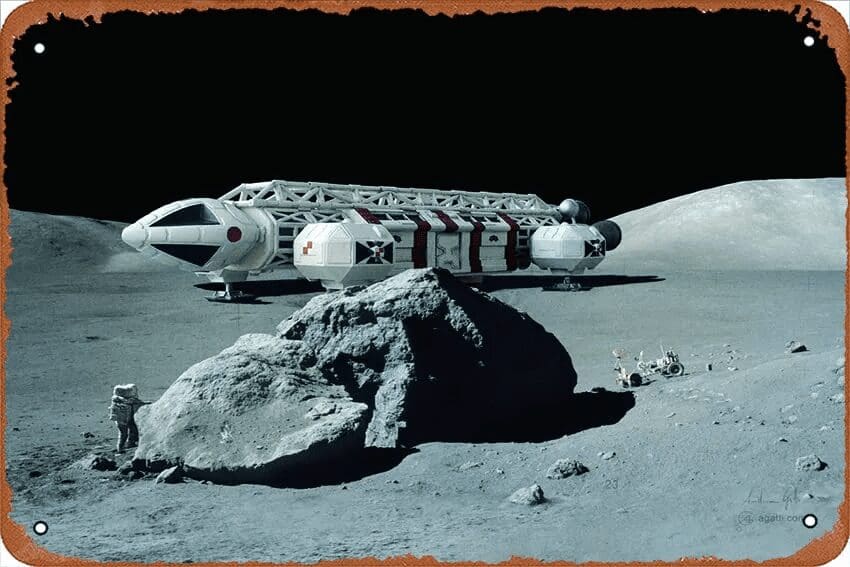
The music was some of the best of Barry Gray’s career and given the length of his career that is saying something. His compositions gave the show a lot of its distinct character. If you watched the show as a kid and never thought about it again for forty years and then heard a snippet from Space 1999’s soundtrack, it would all come rushing back to you. It’s like the perfume of the girl you dated in high school and much later in life catch a whiff of. You remember it all in an instant. The score carried an undeniable weight of horror and mystery with each note.
Sadly, the mystery of the horrors that would befall the second season of Space 1999 was beyond the ability of any composer to translate into music. What happened to this great little show next was bad my Darklings. You may have noticed that I’ve been snapping and snarling at Star Trek more than usual throughout this whole series.
Well, there is a reason for that, and I’ll dive into it in the next installment, where I examine the destruction of Space 1999.
What do you think about Space 1999, or any other of Gerry Anderson’s creations? Do you have a favorite? Let us know in the comments!

Leave a Reply